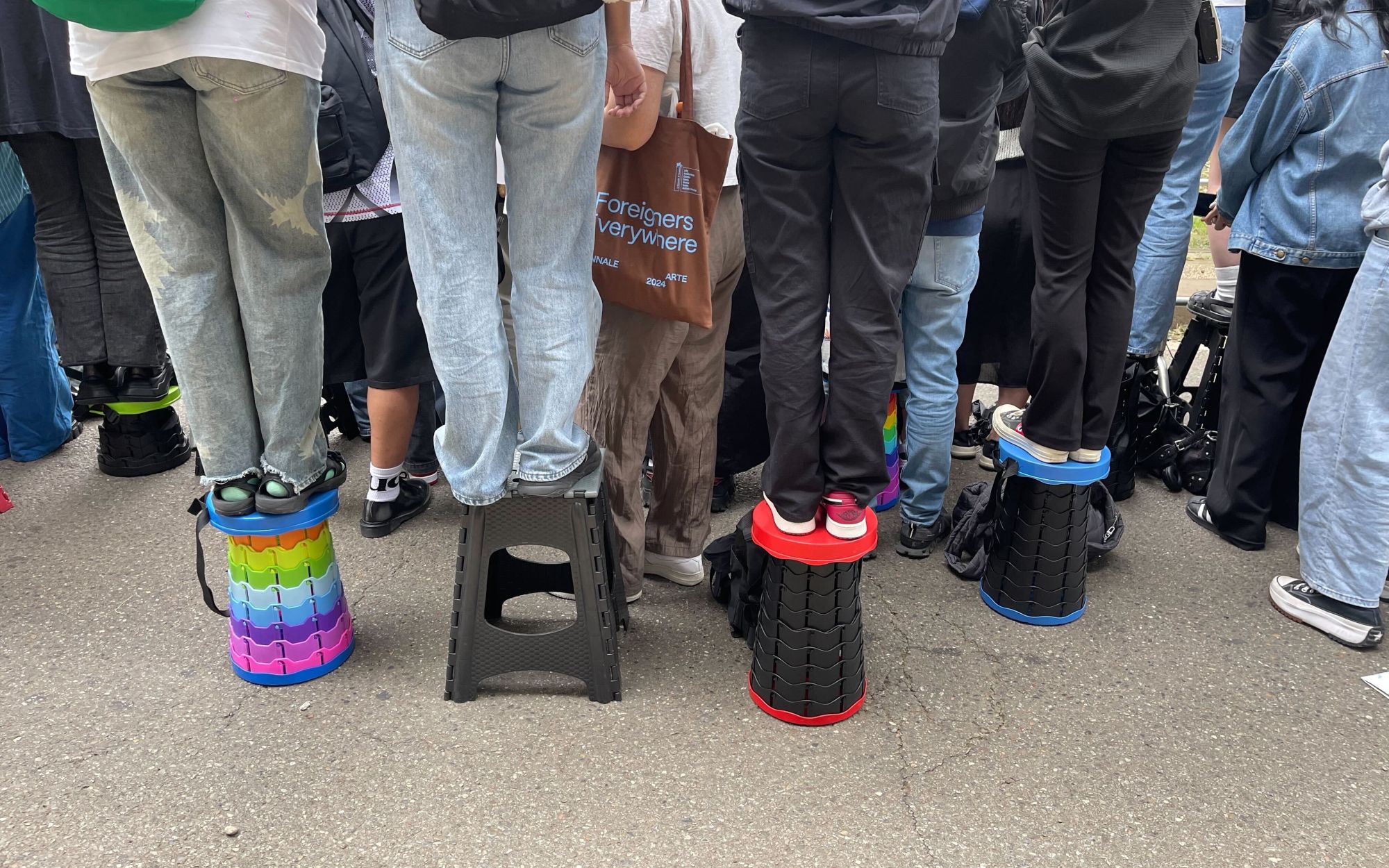Fashion
K-Pop e Fashion Week: come i brand dovrebbero supportare i fan

The best marketing is not viral, but intuitive. When an unmet need is identified and solved with a simple solution, after all, a wave of gratitude always follows. Recently, for example, observing the crowd of K-Pop fans and the numerous Chinese, Thai, and Japanese celebrities who never fail to gather outside fashion shows forming formations reminiscent of stadium stands, an object has become one of the most unexpected props of fashion week: the humble stool. Crowding the barricaded lines, bringing banners, and especially raising waves of screams that echo as if announcing the arrival of these revered figures (in South Korea, their name is not “celebrity” but “idols” to be clear), hordes of young fans, armed with cameras, have started bringing stools of all kinds to rise above the crowd and capture a shot. The result is that outside the venue of almost every fashion show, entire rows of such stools can now be seen – and considering that each brand has its own more or less fixed set of ambassadors, it is quite easy to imagine what would happen if these stools were provided by the brands themselves and, of course, decorated with their logo.
The idea is not so eccentric. After all, due to a cultural gap in the way we conceive the idea of a celebrity, the intense passion and excited emotions of the many K-Pop fans are considered on the verge of fanaticism by what memes call “the European mind.” But even though the hordes of screaming teenagers are often viewed with amused condescension by industry insiders, their presence is the most immediate effect that brands themselves hope to achieve when they invite stars of this caliber: the adoring crowds outside the fashion show, the screams, the frenzy. It is hard to understand for those who live on this side of the globe because the only star with such power over their fans is Taylor Swift, and she is just one, while the ecosystem of Korean idols, as well as mega-stars from countries far from us, is populous and historically structured. Touching their fandom, using it as a large sounding board is already something the fashion industry has learned to do. But directly addressing that fandom would not only absolve brands of any accusations of exploitation but could elevate certain brand shows to new levels of virality. If tomorrow one of the major commercial brands produced branded stools to give away to photographers and fans, the next day they would find them being sold for tens of thousands of dollars on resale sites worldwide.
Attempting to create such an object would not only represent a type of cultural recognition for these fandoms that are first and foremost very united, but also very active and international on the web; but it would also represent perhaps a unique opportunity to make an omnipresent but financially inaccessible fashion brand converse with the most electrifying portion of the Internet audience. The only obstacle to overcome (given that there is certainly no lack of ability to produce such objects) would be the resistance that the more intellectual part of the industry and brands feel towards this world of celebrities, which they simply struggle to understand. It is already impossible to stage a show without hearing journalists complain about the centrality that every type of celebrity enjoys, making the exhibition and analysis of fashion an even less profound and particular process, flattening it into the flash of a blinding camera – so one can imagine how this literal fan service might seem like a low expedient. But if there is one thing we have learned this year, it is that no brand is too strong to afford to ignore the public – so why not make the best use of support that is already there?










